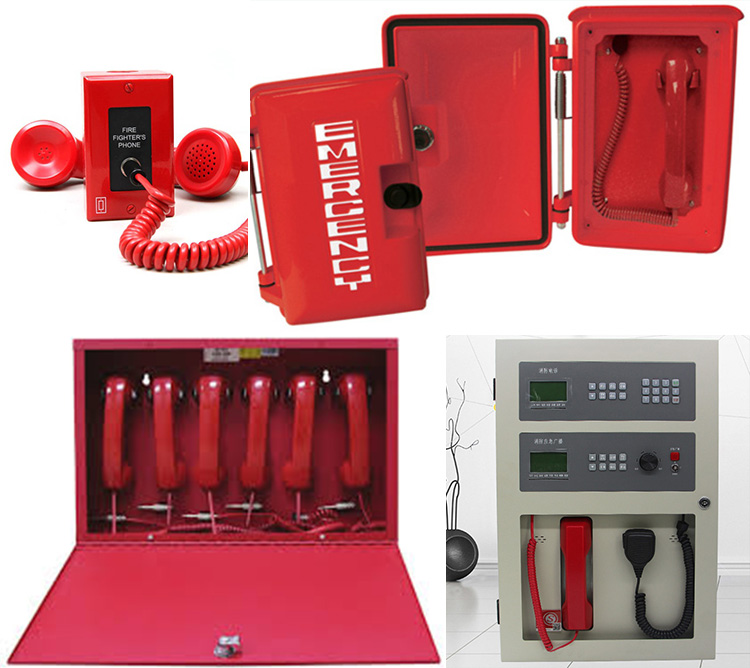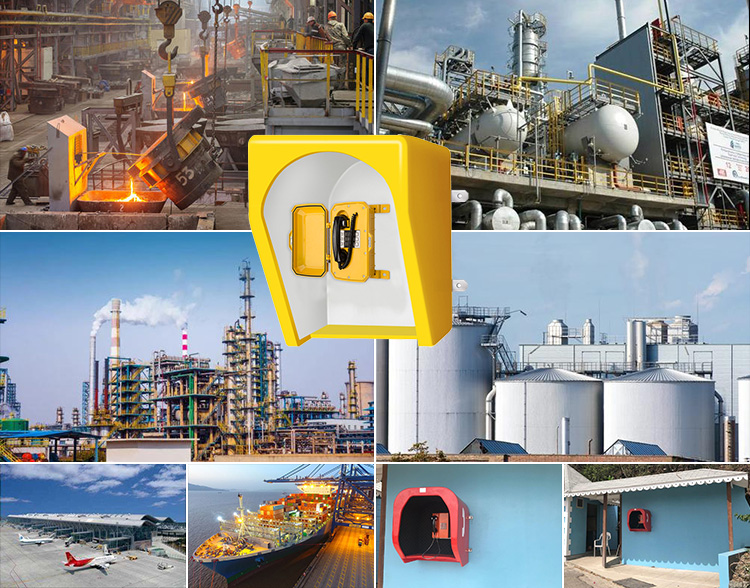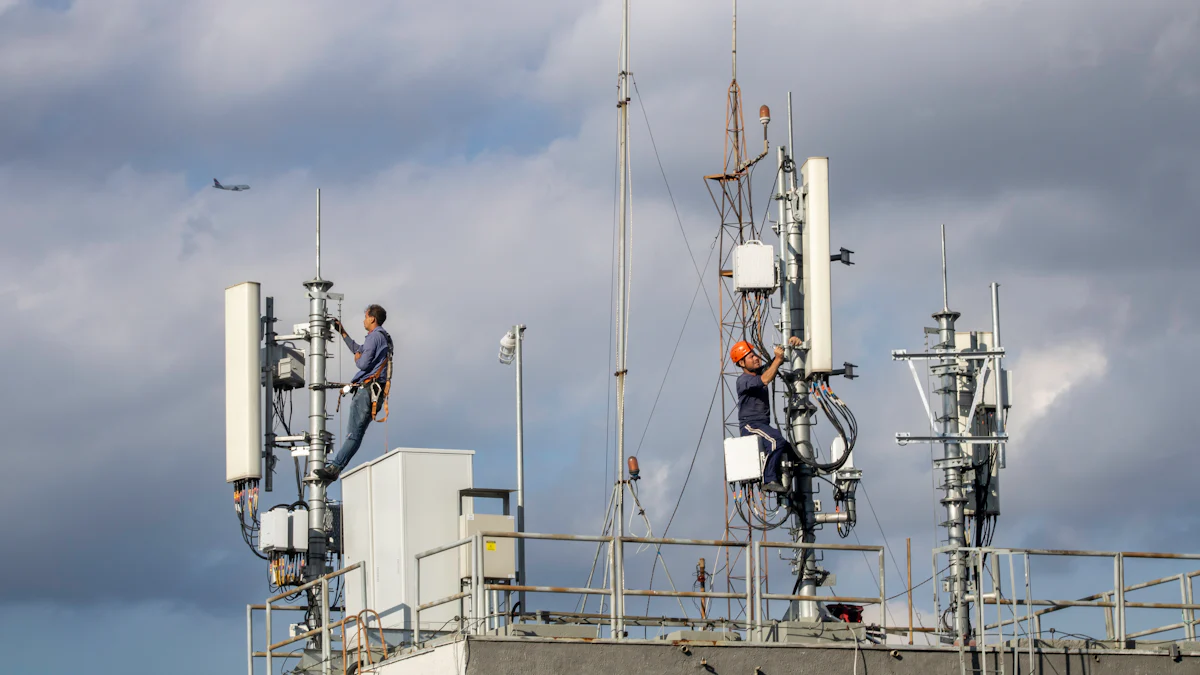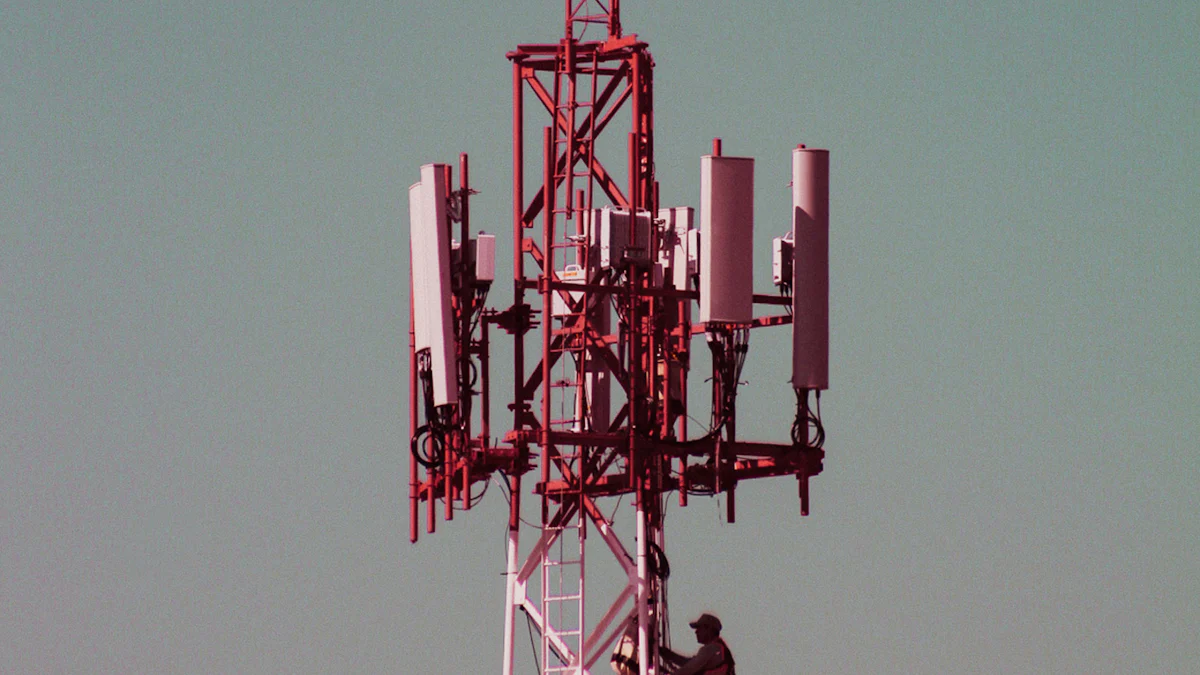

Industrial environments require durable solutions to ensure communication security. A telephone hood enclosure not only protects communication devices from environmental hazards such as dust and moisture but also prevents unauthorized access, ensuring dependable performance. Whether it’s a telephone booth acoustic hood, a telephone hood, or an Acoustic Hood, these enclosures are designed to enhance the durability and functionality of communication devices. By incorporating a telephone booth acoustic hood or similar solutions, these enclosures become indispensable for maintaining secure and reliable communication in demanding conditions.
Key Takeaways
- Telephone enclosures keep devices safe from dust, water, and heat. This helps them work well in tough places like factories.
- These enclosures stop people from tampering, keeping systems secure and safe.
- Buying strong enclosures helps workplaces stay safe and work better. It lowers equipment problems and keeps communication steady in emergencies.
Protection and Durability of Communication Devices

Shielding Communication Devices from Dust and Debris
Industrial environments often expose communication devices to dust and debris, which can impair their functionality. A telephone enclosure acts as a protective barrier, preventing particles from entering sensitive components. This shielding ensures that devices remain operational even in areas with high levels of airborne contaminants. By keeping dust and debris out, enclosures reduce the risk of equipment failure and extend the lifespan of communication systems.
Resistance to Moisture and Corrosion
Moisture and corrosion pose significant threats to communication devices, especially in humid or wet environments. Telephone enclosures provide a sealed environment that prevents water ingress and protects against corrosive elements. Materials like polycarbonate and rotomolded polyethylene are commonly used for their lightweight and corrosion-resistant properties. These materials ensure that enclosures maintain their integrity over time, safeguarding devices from environmental damage.
Durability in Extreme Industrial Temperatures
Industrial settings often experience extreme temperature fluctuations, which can damage communication devices. Telephone enclosures mitigate these risks by maintaining a stable internal climate. Overheating and condensation, common issues in such conditions, are managed through proper temperature and humidity control. Materials like metal and ABS offer robust strength and impact resistance, while polycarbonate and polyethylene provide durability in harsh environments.
- Key temperature challenges include:
- Overheating, which can lead to equipment failure.
- Condensation, which increases the risk of internal damage.
By using durable materials and climate control features, telephone enclosures ensure reliable performance in even the most demanding conditions.
Security and Compliance in Industrial Settings
Preventing Unauthorized Access to Communication Devices
Unauthorized access to communication devices can compromise security and disrupt operations. A telephone enclosure provides a physical barrier that deters tampering and unauthorized use. Many enclosures feature locking mechanisms or restricted access panels, ensuring only authorized personnel can operate or maintain the devices. This added layer of security is especially critical in industrial environments where sensitive information may be transmitted. By preventing unauthorized access, enclosures help maintain the integrity of communication systems.
Meeting Industry Safety and Security Standards
Industrial settings must comply with strict safety and security standards to ensure reliable operations. Telephone enclosures are designed to meet these requirements, offering protection against environmental and operational hazards. The following table highlights key standards relevant to enclosures:
| Standard | Description |
|---|---|
| National Electrical Code (NEC) | Governs the installation of electrical equipment, including enclosures for telephone systems. |
| NEMA 250 | Specifies requirements for enclosures for electrical equipment, ensuring protection against environmental factors. |
Compliance with these standards ensures that enclosures provide adequate protection and meet industry expectations. Organizations that adhere to these guidelines can avoid penalties and maintain operational efficiency.
Supporting Workplace Safety and Efficiency
Telephone enclosures contribute to workplace safety by protecting communication devices from damage and ensuring they remain operational. Reliable communication systems are essential for coordinating tasks, especially in hazardous environments. Enclosures also improve efficiency by reducing downtime caused by equipment failure. Workers can rely on these protected devices to communicate effectively, enhancing overall productivity. By safeguarding communication tools, enclosures play a vital role in creating a safer and more efficient workplace.
Reliability in Emergency and High-Stress Scenarios

Ensuring Functionality During Power Outages
Power outages can disrupt communication systems, especially in industrial settings. A telephone enclosure plays a crucial role in maintaining device functionality during such events. Many enclosures are designed to house backup power systems or integrate with uninterruptible power supplies (UPS). This ensures that communication devices remain operational even when the primary power source fails. Reliable communication during outages allows workers to coordinate effectively and address issues promptly. By safeguarding devices, enclosures help prevent downtime and maintain operational continuity.
Withstanding Harsh Conditions in Crisis Situations
Crisis situations often expose communication devices to extreme environmental conditions. High winds, heavy rain, or intense heat can damage unprotected equipment. Telephone enclosures provide a robust shield against these elements, ensuring devices remain functional. Materials like stainless steel or reinforced polycarbonate enhance the enclosure’s ability to withstand physical impacts and environmental stress. This durability ensures that communication systems continue to operate, even in the most challenging scenarios. Reliable communication during crises can significantly improve response times and decision-making.
Supporting Critical Communication in Emergencies
Emergencies demand quick and effective communication. A telephone enclosure ensures that devices are always accessible and operational when needed most. Features like clear labeling, easy access panels, and compatibility with emergency protocols enhance their usability. Workers can rely on these enclosures to facilitate critical communication, whether coordinating evacuations or reporting hazards. By protecting communication tools, enclosures play a vital role in ensuring safety and minimizing risks during emergencies.
Telephone enclosures play a critical role in safeguarding communication systems in industrial environments. They protect devices from environmental hazards, enhance security, and ensure compliance with safety standards. High-quality enclosures offer additional benefits, including safety, regulatory compliance, and environmental protection. The table below highlights these advantages:
| Benefit | Description |
|---|---|
| Safety | High-quality enclosures prevent accidental contact with live electrical parts, reducing risks of shocks and fires. |
| Compliance | Enclosures from UL-certified manufacturers ensure adherence to safety standards and regulations. |
| Environmental Protection | Protects electrical components from harsh environmental conditions typical in industrial settings. |
Investing in a reliable telephone enclosure ensures communication integrity, even in the most challenging conditions.
FAQ
What materials are commonly used for telephone enclosures?
Manufacturers often use materials like stainless steel, polycarbonate, and ABS. These materials provide durability, resistance to corrosion, and protection against environmental hazards.
How do telephone enclosures improve workplace safety?
Enclosures protect communication devices from damage and ensure reliability. This allows workers to communicate effectively, reducing risks and enhancing safety in hazardous environments.
Are telephone enclosures customizable for specific industries?
Yes, many manufacturers offer customizable enclosures. Options include material selection, size adjustments, and additional features like locking mechanisms or climate control systems.

